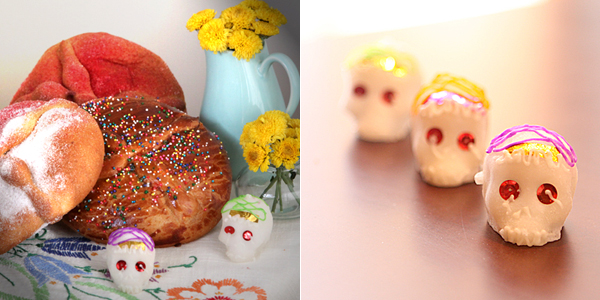
This time of year brings about visions of ghouls and ghosts, waiting to scare the life out of us mere mortals. There are haunted houses, one in particular that is said to make a grown man cry, and even a zombie pub crawl. When October rolls around, if there’s guts and horror, we practically beg for more.
In some cultures, however, this time of year brings about different celebrations and traditions, complete opposite celebrations than the Americanized terror-driven Halloween tradition — celebrations of life and remembering.
Dia de los Muertos originated in the Aztec culture and is now celebrated in many Hispanic cultures on November 1 and 2, which coincide with the religious holidays of All Saints’ Day and All Souls’ Day. Although many celebrations do take place in cemeteries, they are true celebrations of life, rather than a time to mourn the dead.
To celebrate, friends and family gather and give offerings in honor of deceased loved ones. Noelia Garcia of La Loma Tamales describes the offerings, which range from flowers to candles to food and beverages, as “a way to remember.” Often favorite dishes that take much effort and time to make are brought, such as mole and tamales.
In addition to savory dishes, the loved ones’ sweet tooth is not ignored. Sugar skulls, chocolate, and sweet bread called pan de muerto are common sweet offerings given for Dia de los Muertos. Pan de Muerto is a yeast bread made from basic ingredients — egg, flour, sugar and butter — but it holds a unique flavor in its variations which may include anise, nutmeg, or orange-blossom water.

The round loaves are decorated with shapes that represent tears, bones, and skulls, then the bread is brushed with an egg wash and baked. While still warm, the bread is sprinkled with sugar, sometimes mixed with food coloring for extra appeal. The result is a lightly sweet bread with a dry, airy interior. In fact, you might think the texture is a bit too dry, that’s precisely what makes it perfect for dipping into coffee or hot chocolate.
Making pan de muerto at home is a diverting activity — the sweet smell of it as it bakes permeates the house. Unfortunately in my kitchen, my two attempts were failures. I chose a variation that featured anise and the resulting taste was there — subtle, sweet and light — but the texture, well, let’s just say my loaves did not have the signature airiness that the traditional loaves boast.
Lucky for me, Mercado Central‘s Panaderia El Mexicano sells pan de muerto for $1.25 for a traditional loaf, so I could give it a try.
So what happens to these delicious goodies once the life celebrations are done? In some parts of Mexico, it’s become a recent tradition for children to dress up in costumes and go door to door begging for treats. Garcia explains that children will gather in small groups of four to 10 and they will go from house to house, wearing masks, and have to sing La Calavera song [The Skull]. The lady of the house will make them sing it until they get it right. And then they will give the children the bread, chocolates, and oranges.
Sound familiar? Trick or Treat!
Mercado Central will host their Dia de Los Muertos celebration on Sunday, November 1.

Comments are closed.